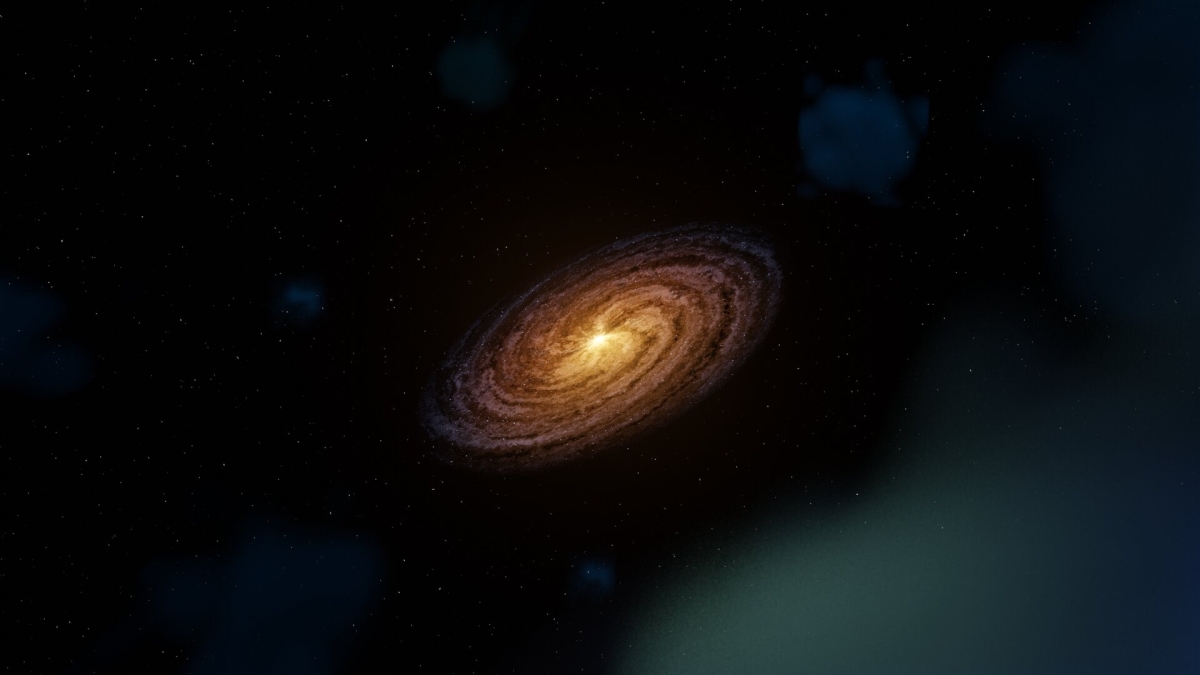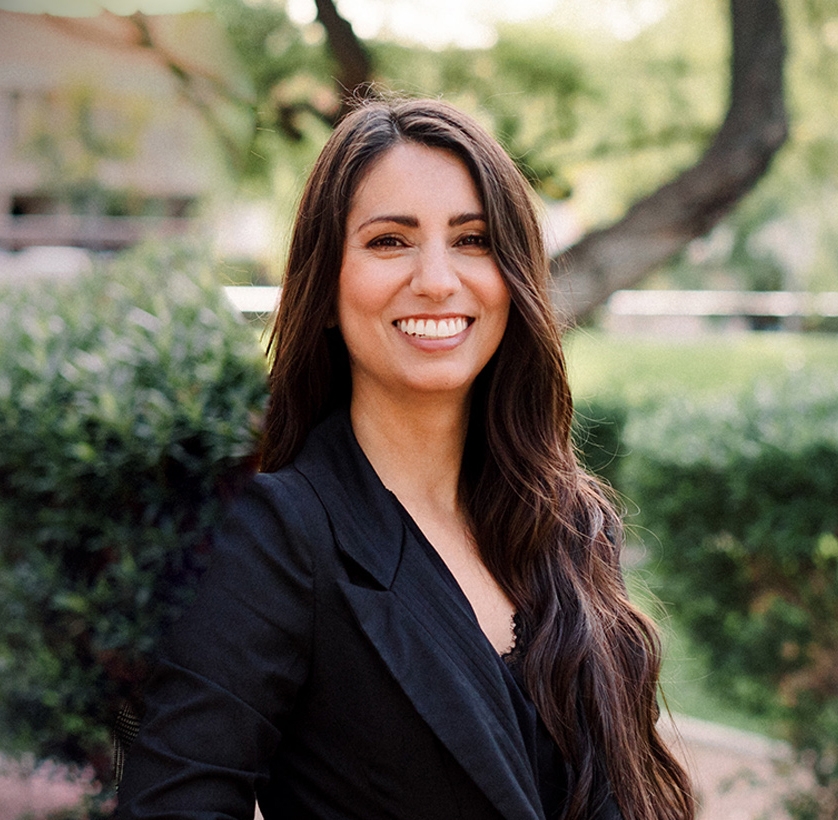Arizona State University astrophysics student and full-time staff member Shireen Dooling grew up gazing at the stars. Now, thanks to her love of challenge and a prestigious fellowship, she’ll have the opportunity to intern with NASA this summer.
Dooling is part of the latest group of undergraduates to receive the Brooke Owens Fellowship, a nonprofit program that recognizes exceptional female and gender minority undergrads who aspire to work in aerospace. Fellows are matched with paid internships at top aerospace companies and receive executive mentorship. Out of nearly 1,000 applicants from around the world, 47 were selected for the fellowship’s class of 2023.
ASU students have been remarkably successful in earning spots in this competitive program, with at least one Sun Devil joining its ranks in six out of the seven years that the fellowship has been offered.
Picturing the invisible
Shireen Dooling
Beginning this June, Dooling will intern for 10 weeks with two of the design labs at the NASA Goddard Space Flight Center near Washington, D.C. Both labs focus on helping people picture the invisible — creating visuals for data and illustrations of abstract ideas.
In addition, Dooling will work with science writers and create images to accompany articles on science topics.
Her work at the internship will draw significantly from the skills she honed as a multimedia developer lead for ASU’s Knowledge Enterprise. In her full-time role, Dooling designs digital illustrations and infographics to aid people’s understanding of abstract concepts and very technical research applications while also lending color to news stories, websites and other publications.
In Dooling’s youth, a wealth of starry nights combined with a love of sci-fi classics like “Star Trek,” “Star Wars” and “The X-Files” stirred up a passion for outer space.
“I grew up in a low light-pollution setting, in the middle of nowhere outside of Florence. So there were a lot of dark, clear Arizona nights,” she says. “I always enjoyed looking up at the night sky and imagining the unknown and the possibilities.”
Learning about Marie Curie in school further inspired her to pursue her interest in science. Curie was a physicist and chemist in the early 20th century — a time when few women worked in the sciences. She pioneered research on radioactivity, won two Nobel Prizes and later died from exposure to radiation during her work.
“I was so captivated by her determination. Understanding that she had died because of her research, while contributing to the greater good through science, was a pivotal life lesson,” Dooling says.
While trying to decide on her major for her first bachelor’s degree from ASU, Dooling says she briefly considered astronomy. But, because she doubted she had the necessary math skills, she chose to get a Bachelor of Science in graphic design instead. Working at ASU, however, provided an unexpected opportunity to pursue another degree.
“Over the years reflecting on it, I thought, I might as well try to do the thing that I thought I couldn’t do,” she says. “So I picked astrophysics because it sounded the hardest.”
Going forward, Dooling’s overarching mission will be to make science, and specifically space science, easy for anyone to understand. She hopes that teaching people the process of science will help them when they learn something new or run into misinformation.
“Giving further insight into the research that's coming out of the space industry is definitely what I want to help with. The space industry is going to be so pivotal in our future as a society, and it's only going to get more complicated socially, philosophically, ethically,” Dooling says. “I want to make sure that people are equipped with an understanding of the science behind it.”
If she had the opportunity in real life to visit space, Dooling says she would love to live in low Earth orbit or go to the moon.
“But in a ‘Miss Frizzle’s Magic School Bus’ scenario, I would absolutely love to fly through a nebula and see what it looks like in person,” she says. “Maybe you get there and you’re just this tiny speck in this enormous nebula, so you can’t see anything because of the scale. But flying up on it would be something really, really dramatic to see.”
A legacy of star students
Dooling is the latest in a long line of ASU students who have earned their place as “Brookies,” or Brooke Owens Fellows.
“Interacting with the other fellows has been phenomenal — it's extraordinary how much talent is in this group. It's also nice to have a group of people who have similar experiences as they begin their careers,” said Angelica Berner, an ASU physics alumna who was part of the class of 2019 Brooke Owens Fellows.
A record three ASU students made it into last year’s class of fellows, including first-generation, transfer and online students.
“No matter what words I use, I could never explain how honored I feel to be a part of such an incredible fellowship. This isn’t the kind of thing I grew up thinking that I could accomplish. To be here just makes me realize that I can, and I did,” said Rose Ferreira, an astronomical and planetary sciences major who was part of the class of 2022 Brooke Owens Fellows. Ferreira interned with the Spanish communications team at the NASA Goddard Space Flight Center.
“I was once a 12-year-old girl, staring at the stars, wondering what it would be like to explore them. Now here I am, only a decade later, literally building a rocket that will probably take the first people to Mars. Our stories show the next generation that if we can do it, they can do it,” said mechanical engineering major Sierra Malmberg, who interned as a Starship booster build engineer at SpaceX through her 2022 fellowship.
“I've always had a passion for science communication, and I've always really admired NASA's aim of making the science that they do accessible to everyone. No matter where my career takes me in the future, making sure I'm responsibly and accurately portraying the science I'm doing is always going to be my top priority,” said Erica Kriner, a geography and sustainability major who interned with the media and communication team at NASA Goddard Space Flight Center through her 2022 fellowship.
One of the goals of the fellowship is to provide tailored learning experiences that will give fellows an edge as they pursue jobs in the aerospace industry. ASU journalism alumna and class of 2017 Brookie Chelsey Ballarte used her internship as a launchpad for starting her career at NASA.
“In school, I thought if I couldn't land a job at the Discovery Channel, I could never be a science communicator. The internship allowed me to see that there are reporters focusing on science and space, and that space companies have their own PR people as well,” she says.
Ballarte interned at GeekWire, an online tech news website, where she provided written and multimedia coverage on aerospace and aviation in the Seattle area. While there, she got an offer to intern at NASA’s Goddard Space Flight Center, and she later became a full-time employee at NASA.
She now works as a public affairs specialist at NASA’s Johnson Space Center in Houston, Texas, which is focused on human spaceflight. The job comes with a lot of creative freedom, she says, including the chance to produce video content as she once dreamed of in school.
“Being in the very first class of Brooke Owens Fellowships was incredibly rewarding, but also scary. There was no data on how many people were going to apply, no template on how your application should look, and no idea what the summer ahead would look like. But it also meant I got to pave the way for others and provide feedback on what worked and what didn't for future classes,” Ballarte says. “Today, I'm still active in the program, reviewing applications and reminding other communications majors that they have a place in this very engineering-focused fellowship.”
Top illustration by Shireen Dooling
More Science and technology

ASU at the heart of the state's revitalized microelectronics industry
A stronger local economy, more reliable technology, and a future where our computers and devices do the impossible: that’s the transformation ASU is driving through its microelectronics research…

Breakthrough copper alloy achieves unprecedented high-temperature performance
A team of researchers from Arizona State University, the U.S. Army Research Laboratory, Lehigh University and Louisiana State University has developed a groundbreaking high-temperature copper alloy…

4 ASU researchers named senior members of the National Academy of Inventors
The National Academy of Inventors recently named four Arizona State University researchers as senior members to the prestigious organization.Professor Qiang Chen and associate professors Matthew…



